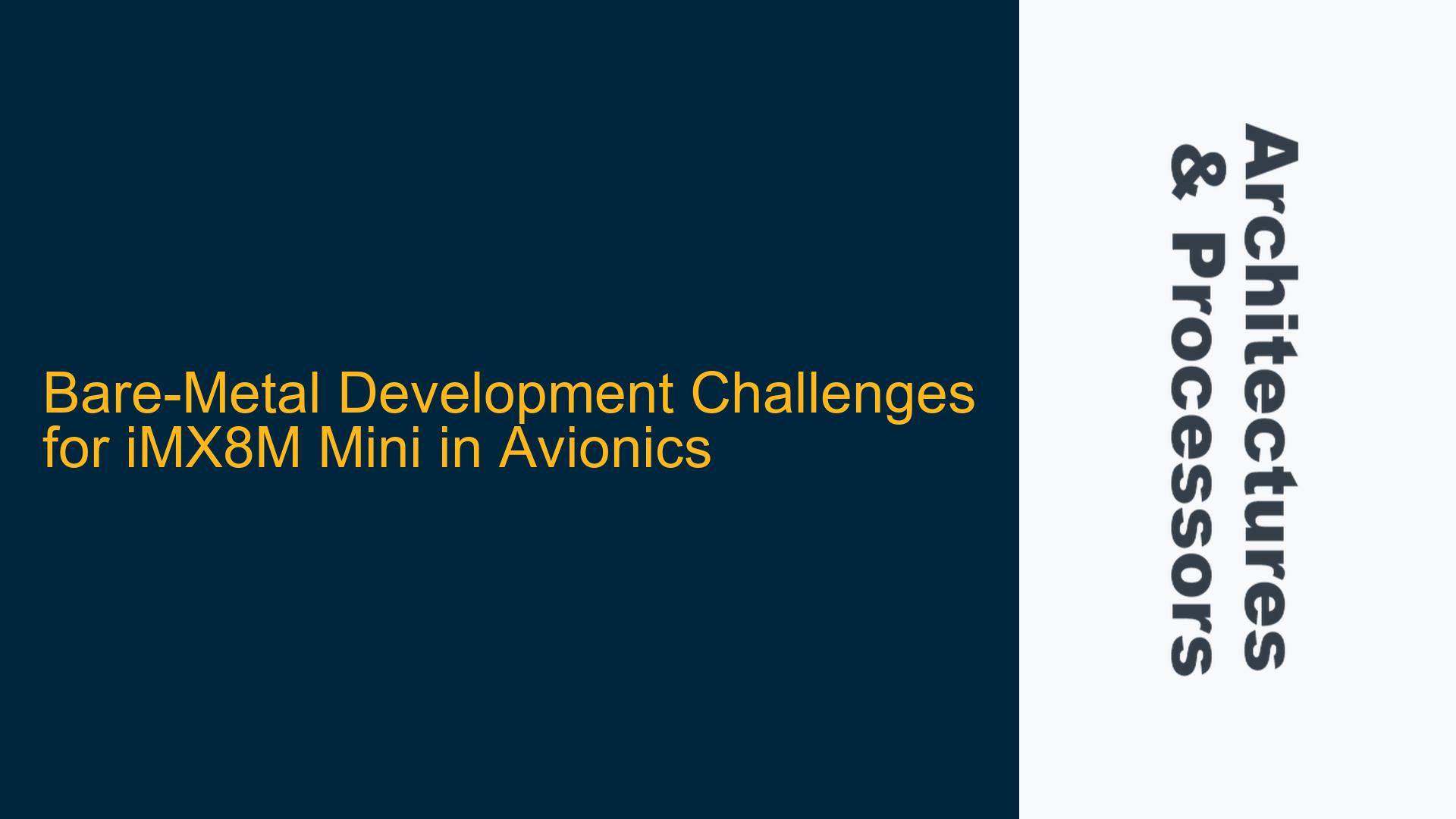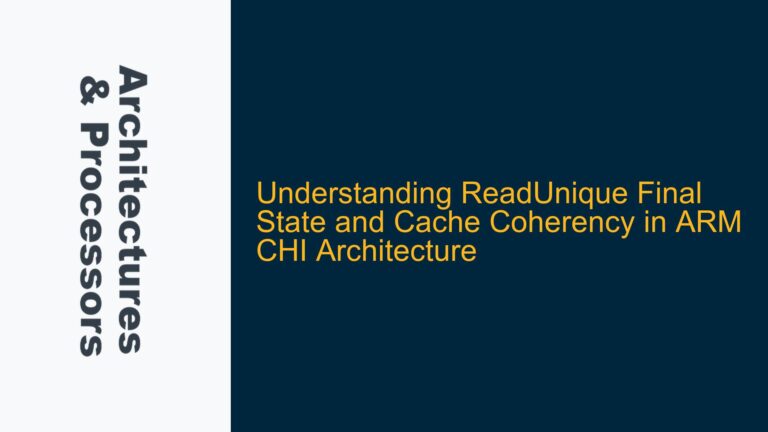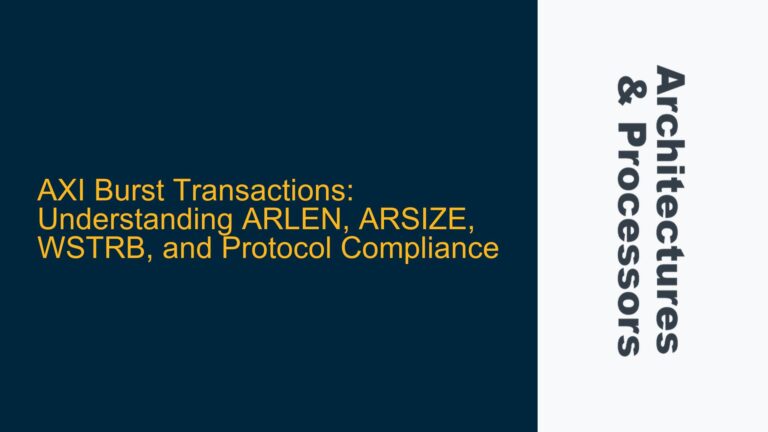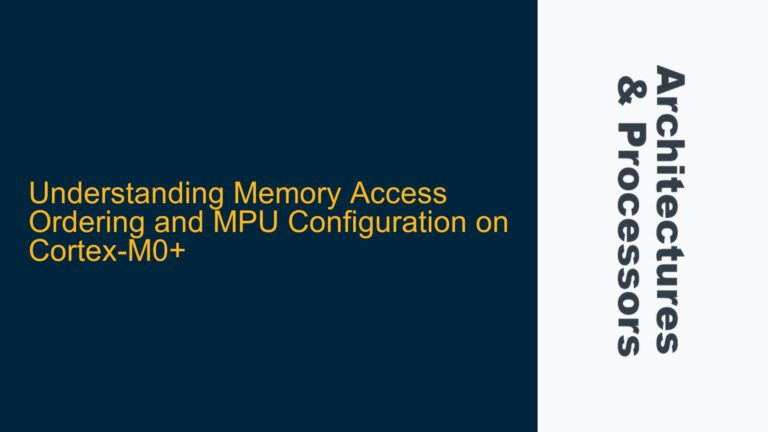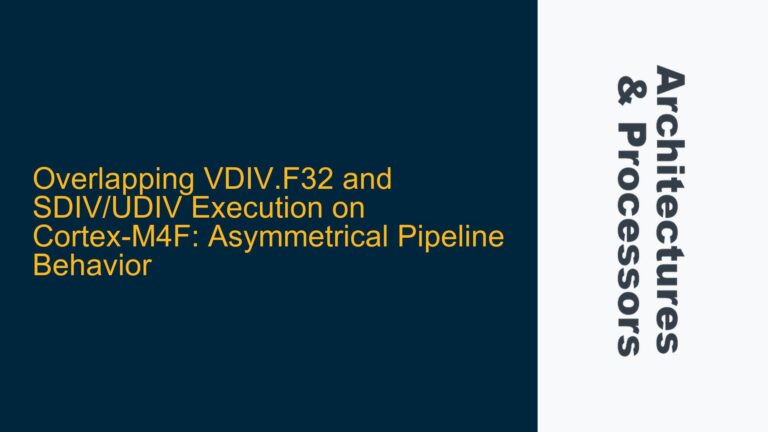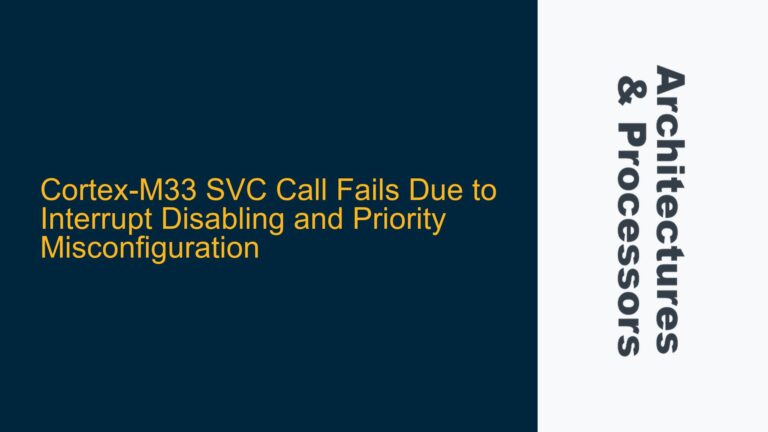Bare-Metal Code Development for ARM Cortex-A53 and Cortex-M4 in iMX8M Mini
Developing bare-metal code for the iMX8M Mini, which features a dual-core ARM Cortex-A53 and a Cortex-M4, presents unique challenges, especially in avionics applications where certification and reliability are paramount. The Cortex-A53, being a high-performance application processor, and the Cortex-M4, a real-time microcontroller, require different approaches to bare-metal development. The Cortex-A53 operates in a more complex environment with features like caches, MMUs, and multi-core synchronization, while the Cortex-M4 is typically used for real-time tasks with deterministic behavior. The iMX8M Mini’s heterogeneous architecture adds another layer of complexity, as both cores must work in tandem without an operating system to manage their interactions.
The primary challenge lies in managing the hardware resources directly, including memory management, interrupt handling, and peripheral configuration, without the abstraction layers provided by an OS. This requires a deep understanding of the ARM architecture, particularly the differences between the Cortex-A53 and Cortex-M4. For instance, the Cortex-A53’s memory management unit (MMU) must be configured manually to map physical addresses to virtual addresses, while the Cortex-M4 typically uses a simpler memory protection unit (MPU). Additionally, the Cortex-A53’s cache coherency mechanisms must be carefully managed, especially when sharing data between the two cores.
In avionics, the lack of an OS means that all system functions, including task scheduling, communication, and fault tolerance, must be implemented from scratch. This increases the development effort and requires rigorous testing to meet certification standards like DO-178C. The absence of an OS also means that developers must handle low-level details such as boot sequencing, power management, and error handling, which are typically managed by the OS in non-bare-metal systems.
Certification Requirements and Toolchain Limitations for Avionics
Avionics systems are subject to stringent certification standards, such as DO-178C for software and DO-254 for hardware. These standards mandate rigorous development processes, including requirements traceability, code coverage analysis, and tool qualification. Tool qualification is particularly critical, as the tools used to develop and verify the software must themselves be certified to ensure they do not introduce errors. This includes compilers, linkers, debuggers, and any other tools that directly impact the generated binary code.
The choice of toolchain is a significant consideration in bare-metal development for avionics. While open-source toolchains like arm-none-eabi-gcc are available, they may not meet the certification requirements out of the box. For example, the compiler must generate deterministic and verifiable code, and any optimizations must be thoroughly documented and validated. Commercial toolchains, such as ARM’s DS-5 or IAR Embedded Workbench, often come with certification support packages, but they can be prohibitively expensive, especially for long-term projects spanning 15-20 years.
Another challenge is the qualification of the development environment itself. In avionics, the entire toolchain, including the IDE, debugger, and any scripts or automation tools, must be qualified. This process involves demonstrating that the tools operate correctly and do not introduce defects into the software. For open-source tools, this qualification process can be particularly challenging, as the source code may not be fully documented or tested to the standards required for certification.
The use of a certified RTOS can simplify some of these challenges, as the RTOS vendor typically provides a qualified toolchain and documentation to support certification. However, as noted in the discussion, the cost of licensing a certified RTOS like QNX can be a significant barrier, especially for smaller organizations or projects with long lifespans. This leaves developers with the difficult choice between investing in a certified RTOS or undertaking the substantial effort of qualifying their own toolchain and bare-metal code.
Strategies for Bare-Metal Development and Toolchain Optimization
Given the challenges of bare-metal development for the iMX8M Mini in avionics, several strategies can be employed to optimize the development process and meet certification requirements. One approach is to use a hybrid development model, where a commercial IDE and debugger are used during the initial development phase, and then transition to an open-source toolchain for long-term maintenance. This allows developers to take advantage of the advanced debugging and profiling features offered by commercial tools during the most complex phase of development, while avoiding the long-term costs associated with subscription-based tools.
For example, ARM’s Development Studio can be used for initial driver development and debugging, as it provides comprehensive support for the Cortex-A53 and Cortex-M4 cores, including multi-core debugging and trace capabilities. Once the drivers and core system functions are stable, the project can transition to an open-source toolchain like arm-none-eabi-gcc for ongoing maintenance. This approach requires careful planning to ensure that the transition does not introduce new issues, and that the open-source toolchain is properly qualified for use in the avionics environment.
Another strategy is to leverage existing open-source projects and libraries that have been developed for bare-metal systems. For instance, the ARM CMSIS (Cortex Microcontroller Software Interface Standard) provides a set of APIs for accessing Cortex-M4 peripherals, which can simplify development and reduce the risk of errors. Similarly, the ARM Trusted Firmware project provides a reference implementation for booting and managing Cortex-A53 cores, which can serve as a starting point for bare-metal development. However, these libraries must be carefully reviewed and tested to ensure they meet the requirements for avionics certification.
To address the challenges of multi-core synchronization and communication, developers can implement custom mechanisms for inter-core communication, such as shared memory regions with carefully managed cache coherency. The Cortex-A53’s cache coherency unit (CCU) can be used to ensure that data shared between the cores is consistent, but this requires a deep understanding of the ARM architecture and careful management of cache invalidations and flushes. Additionally, developers must implement robust error handling and recovery mechanisms to ensure the system can recover from faults without requiring a full reboot.
Finally, the certification process itself can be optimized by adopting a modular approach to software development. By breaking the system into smaller, independently testable modules, developers can simplify the certification process and reduce the risk of introducing defects. Each module can be developed, tested, and certified separately, with a focus on meeting the specific requirements of the avionics standard. This approach also makes it easier to reuse modules across different projects, further reducing development time and cost.
In conclusion, bare-metal development for the iMX8M Mini in avionics is a complex and challenging task, but with careful planning and the right strategies, it is possible to develop a reliable and certifiable system. By leveraging existing tools and libraries, adopting a hybrid development model, and focusing on modularity and rigorous testing, developers can overcome the challenges of bare-metal development and meet the stringent requirements of avionics certification.
